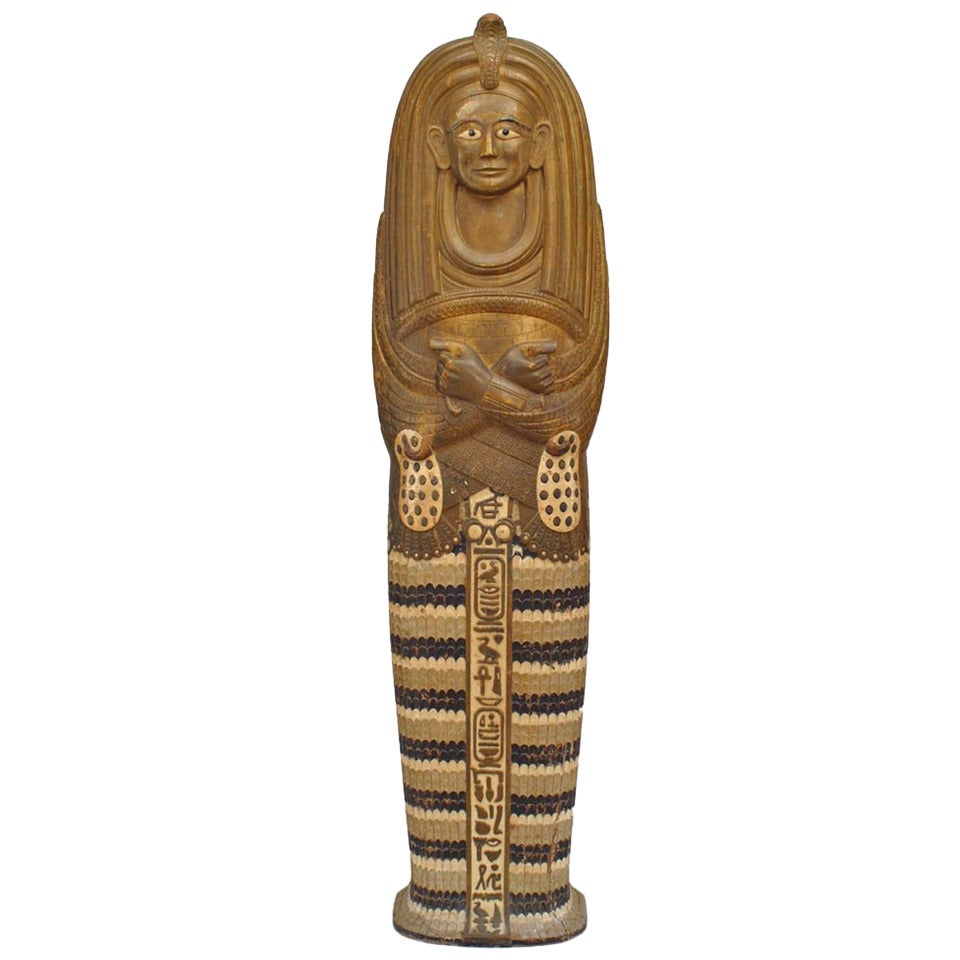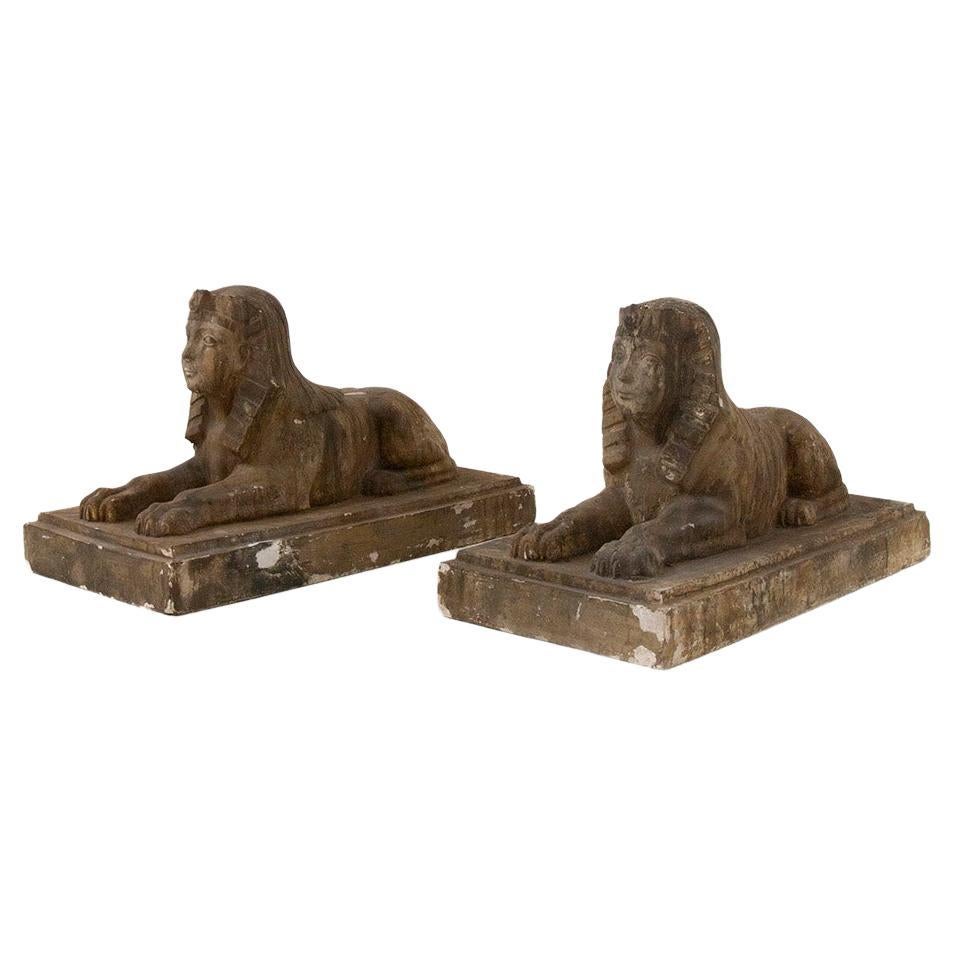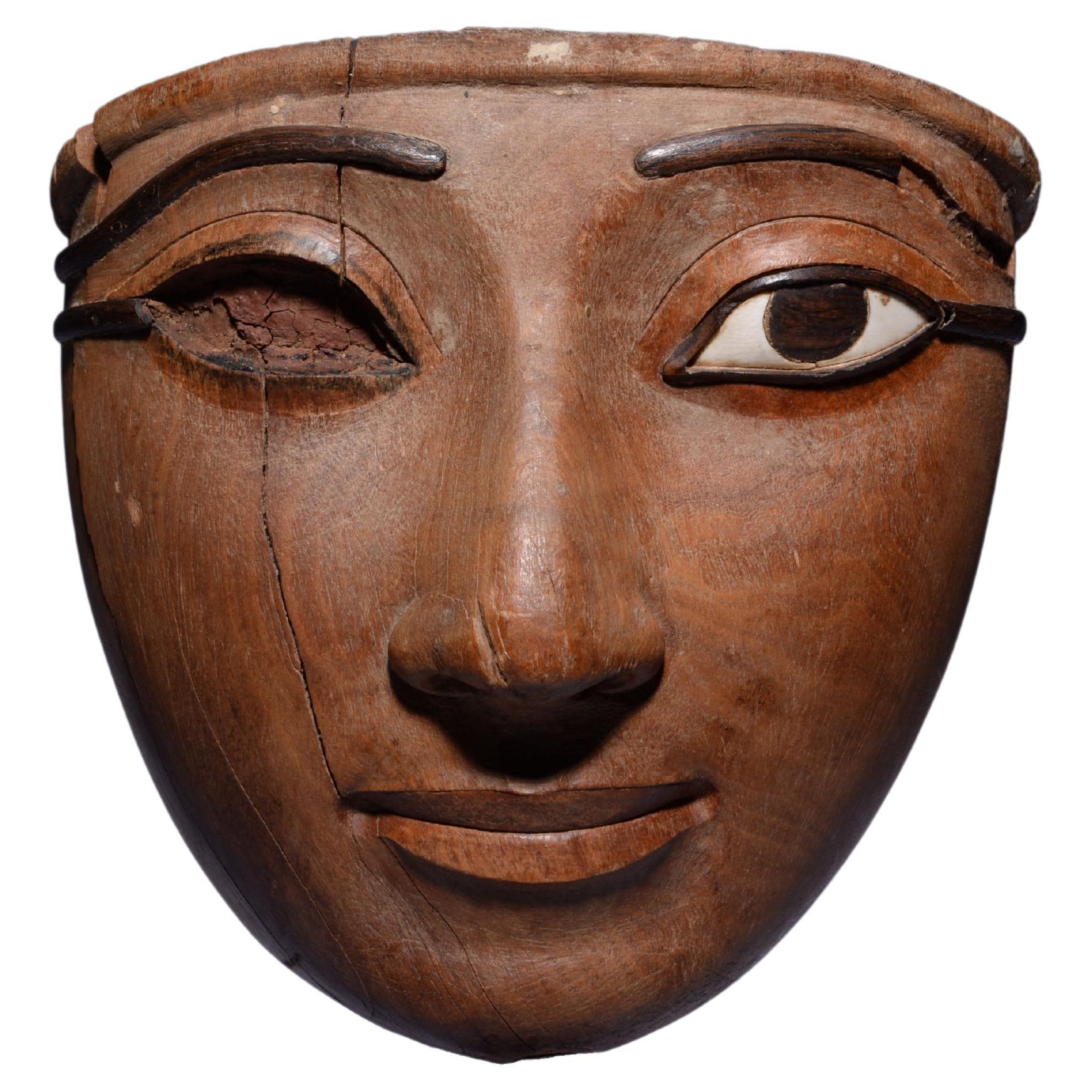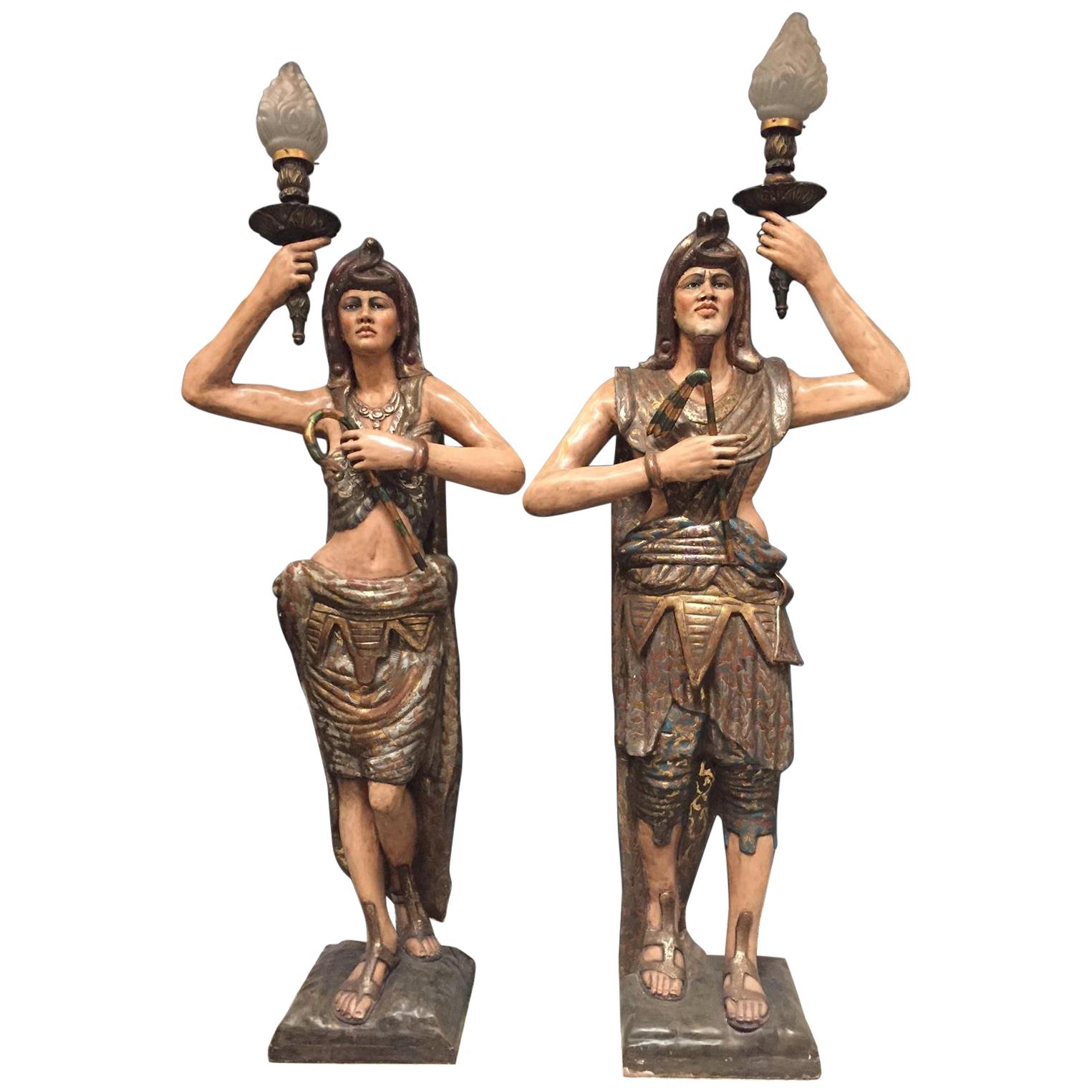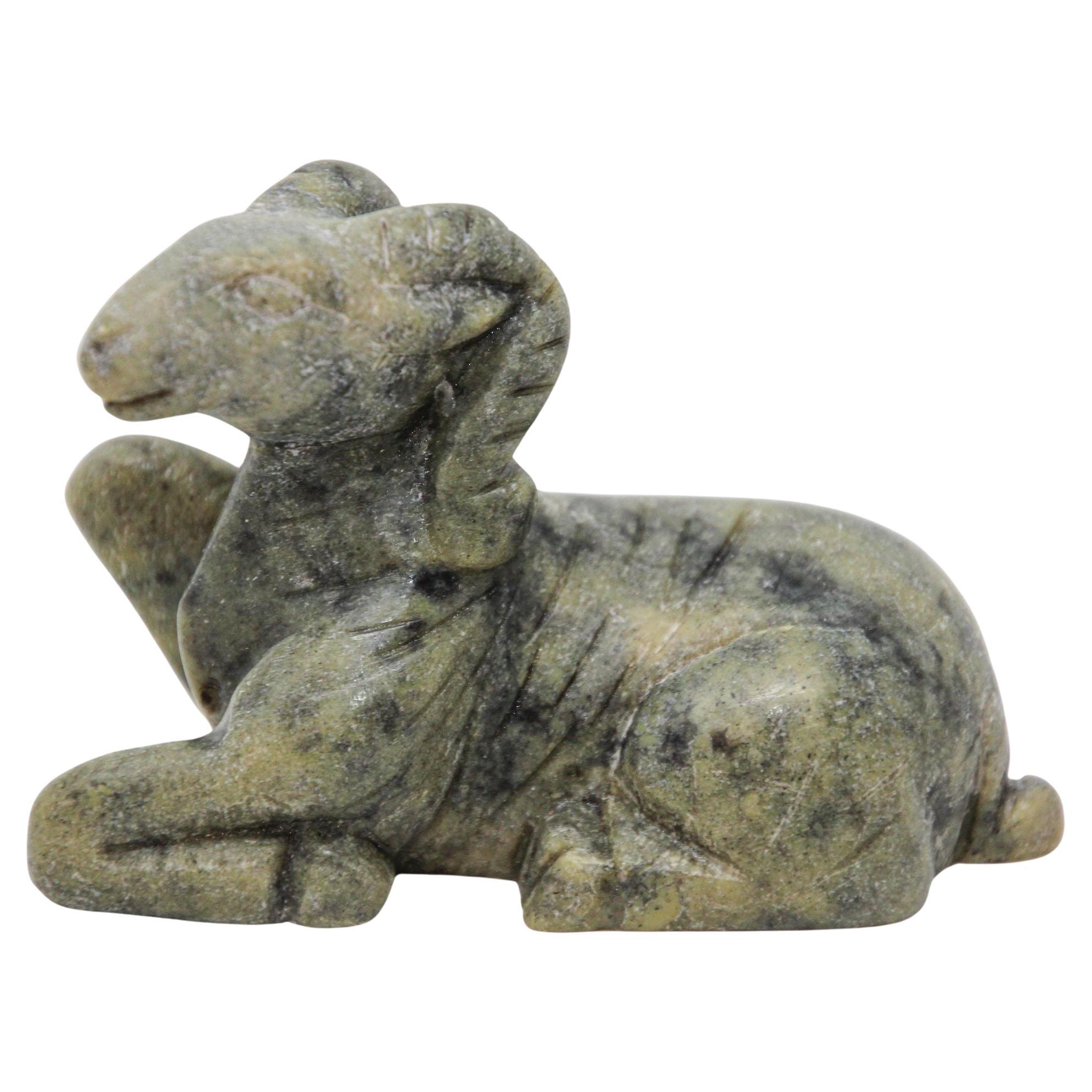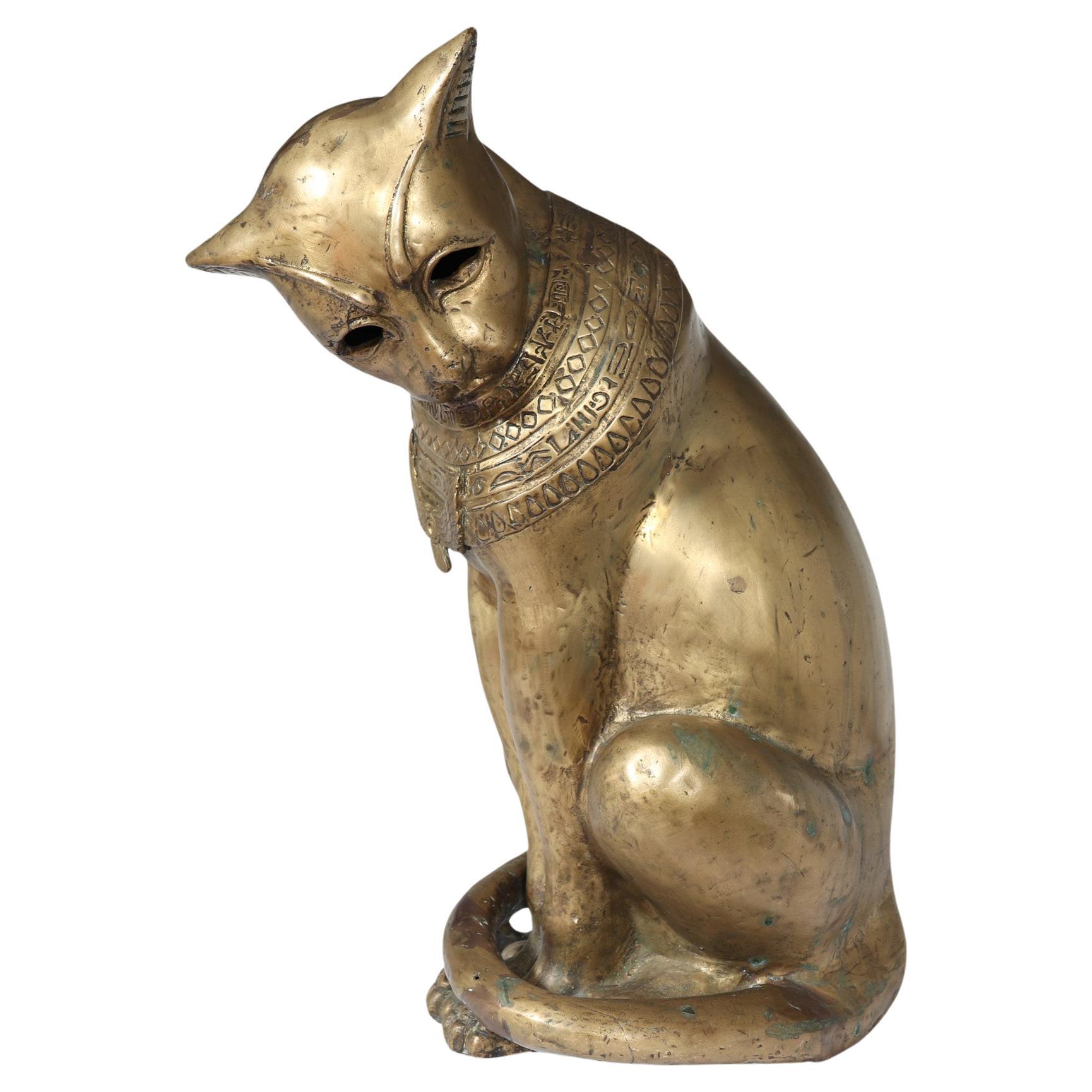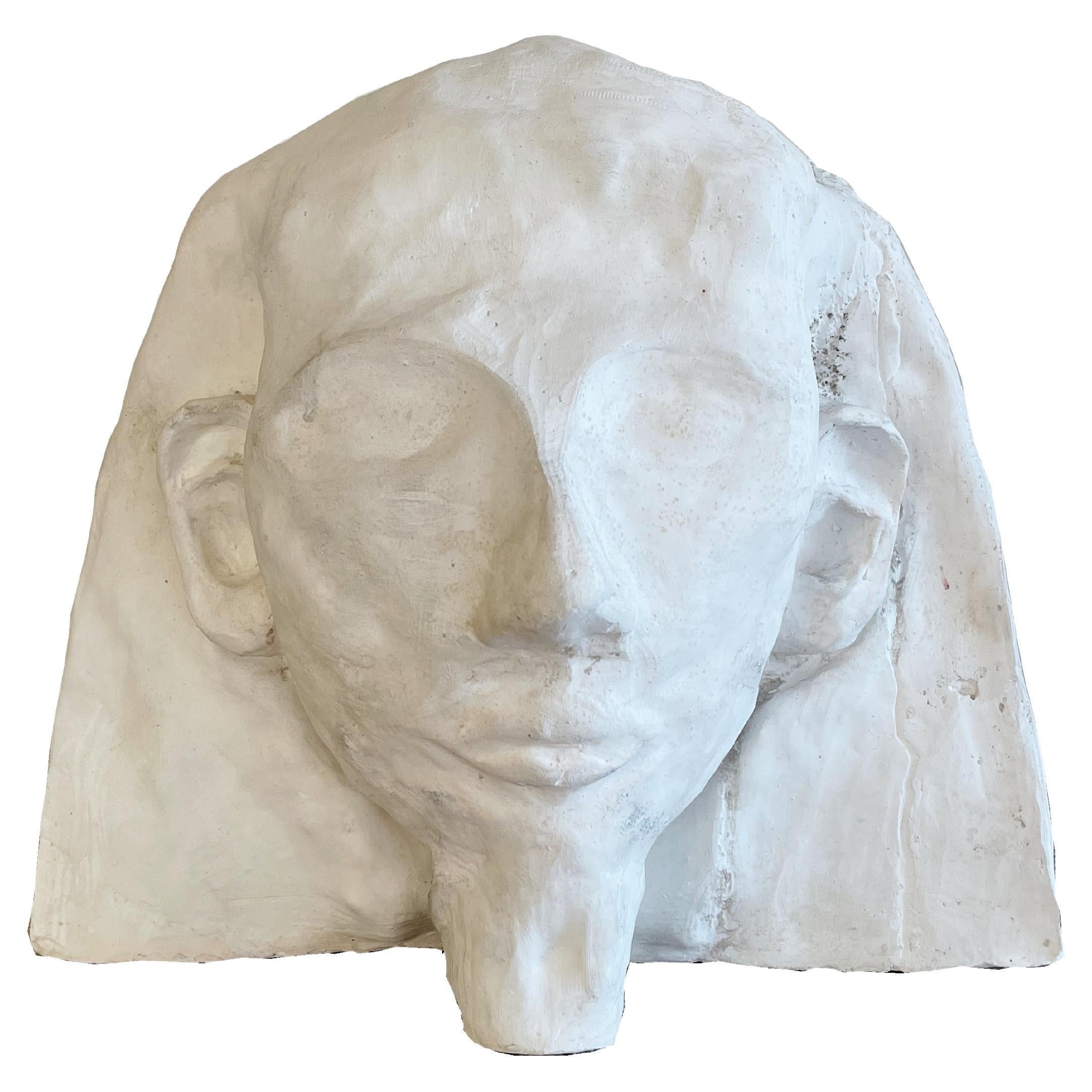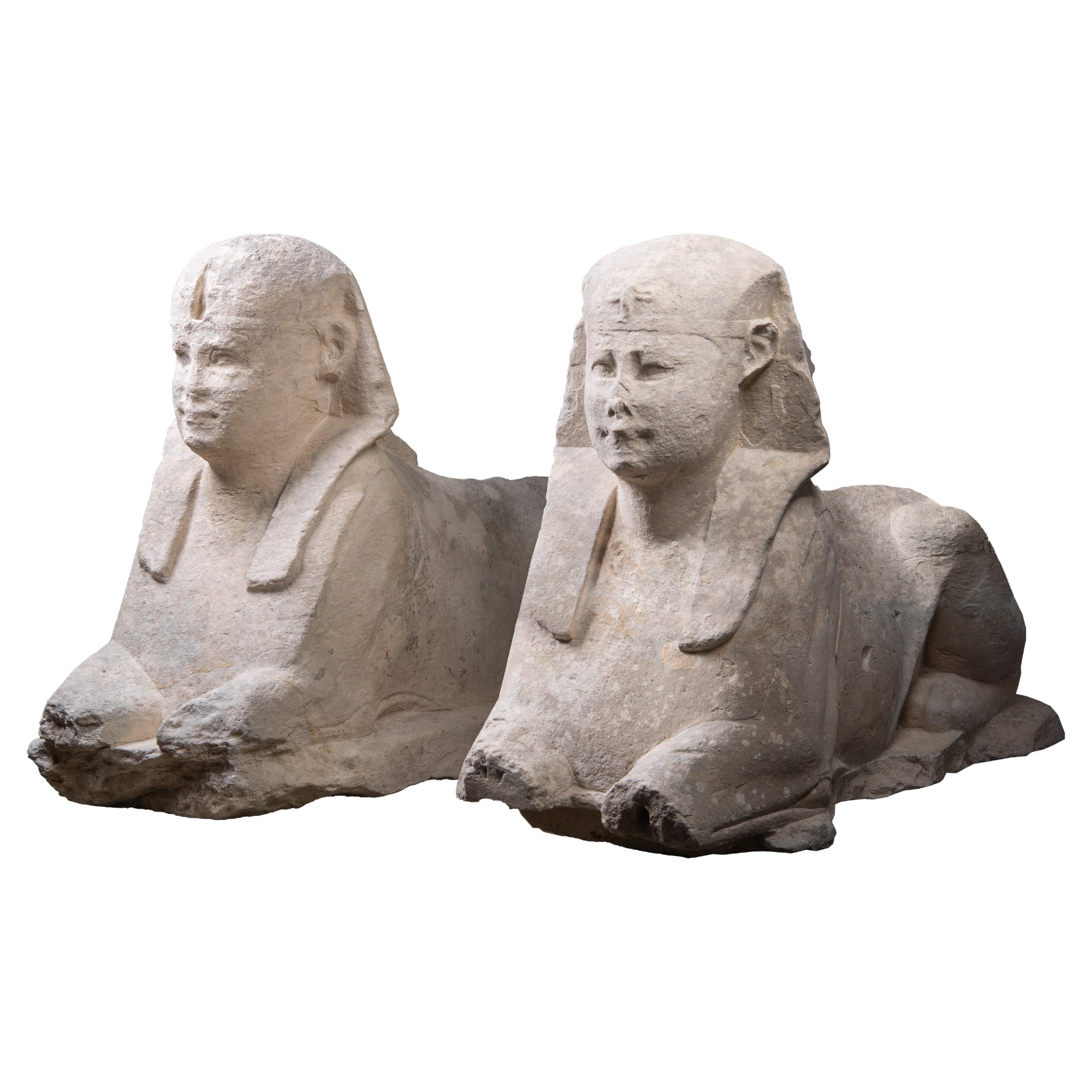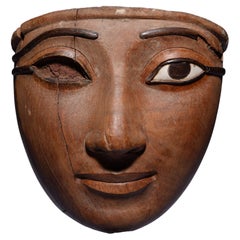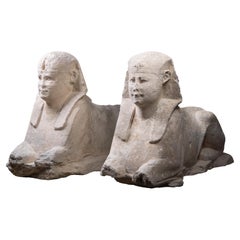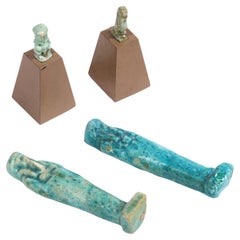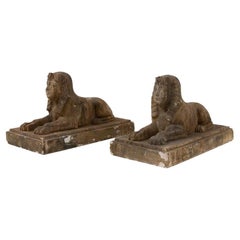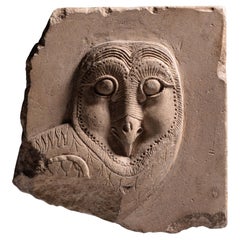
Egyptian Relief of a Barn Owl
View Similar Items
Video Loading
Want more images or videos?
Request additional images or videos from the seller
1 of 6
Egyptian Relief of a Barn Owl
About the Item
- Dimensions:Height: 2.96 in (7.5 cm)Width: 2.56 in (6.5 cm)Depth: 0.6 in (1.5 cm)
- Style:Egyptian (Of the Period)
- Materials and Techniques:
- Place of Origin:
- Period:
- Date of Manufacture:Circa 664-30 B.C.
- Condition:Wear consistent with age and use.
- Seller Location:London, GB
- Reference Number:Seller: 429981stDibs: LU1052231460382
About the Seller
5.0
Recognized Seller
These prestigious sellers are industry leaders and represent the highest echelon for item quality and design.
Established in 2008
1stDibs seller since 2014
100 sales on 1stDibs
Typical response time: 8 hours
Associations
LAPADA - The Association of Arts & Antiques DealersInternational Confederation of Art and Antique Dealers' AssociationsThe British Antique Dealers' Association
More From This SellerView All
- Egyptian Head of a ManLocated in London, GBEgyptian head of a man, carved granite. 18th Dynasty, circa 1550-1292 B.C. Carved in beautiful dark granite, this head depicts an elite individual, perha...Category
Antique 15th Century and Earlier Egyptian Egyptian Busts
MaterialsGranite
- Exceptional Egyptian Sarcophagus MaskLocated in London, GBExceptionally Fine Wooden Sarcophagus Mask Third Intermediate Period, 21st Dynasty, circa 1069-945 BC. Acacia wood, rosewood, hippopotamus ivory Masterfully carved from a single piece of fine-grained hardwood, the present mask is characteristic of the most exquisite funerary art made during the 21st Dynasty, and was probably commissioned for a particularly high-ranking individual. The oval face displays a gently smiling mouth with full, outlined lips, furrows at the corners and a bow-shaped philtrum. The straight nose with rounded nostrils, the cheeks full and fleshy and the large, almond shaped eyes with heavy lids and tapering cosmetic lines, set below long, sweeping eyebrows. Social collapse across the Mediterranean in the Late Bronze Age meant that the 21st Dynasty in Egypt was a period of great turmoil. Trade routes were disrupted, governments collapsed, and mass migration occurred. Economic scarcity meant that traditional funerary practices in Egypt were also affected, with a lack of material and financial resources leading to the reuse of preexisting material. As a result, during the 21st Dynasty, 19th and 20th Dynasty coffins changed ownership rapidly and were heavily recycled for new purposes. Tombs were also unmarked allowing them to be shared by many people. These new practices brought forth a shift in the understanding of funerary paraphernalia. No longer important objects owned forever by the deceased, they were now simply seen as short-term transformative devices, whose symbolic and ritualistic meaning could be appropriated for others. However, paradoxically, the art of coffin-making also reached new heights during this period, and many of the richly dec- orated “yellow” coffins, characteristic of the 21st Dynasty, are remarkable works of art in their own right. Indeed, knowing that coffins were being reused throughout Egypt, the Egyptian élite set themself apart by commissioning lavish sarcophagi decorated with the images and texts meant to help guide them to the afterlife, and which would otherwise have adorned the tomb walls. As coffins were the chief funerary element which now identified the dead and allowed them a physical presence in the world of the living, their quality and appearance were of the utmost importance. The traditional coffin ensemble was made of three parts: a wooden mummy cover, which laid directly atop the mummy, an inner coffin, and an outer coffin, both made of a lid and case. Additional decorative elements, such as masks, were carved out separately and later glued or pegged to the lids. After the completion of the painted decoration, the sarcophagus was covered in a varnish to give it its yellow colour. Gilding was sometimes used for the coffins of the high priests’ families, notably on parts representing naked skin, such as the face mask. However, some of the élite tactically avoided gilding altogether as to ensure that their coffin would not be looted. When manufacturing the inner and outer coffins, particular attention was paid to the woodwork. Displaying the skill of the carpenter, this type of funerary art has largely remained unparalleled throughout Egyptian history. The principal wood used to craft the present mask is Acacia nilotica. The evergreen Egyptian acacia was considered sacred and said to be the tree of life, the birthplace of the god Horus, as well as symbolic of Osiris, the god of the dead and resurrection. The modelling of the face in the wood is superb, but the inlays also help mark this mask out as exceptional. Inlaid eyes and eyebrows were extremely rare and reserved to the finest and most expensive coffins. Traditionally, eyes were made of calcite, obsidian, or quartz, and eyebrows of coloured glass paste or bronze. Here, the pupils, eyebrows, and cosmetic lines are inlaid with Dalbergia melanoxylon, a rare type of wood which belongs to the rosewood genus. In antiquity, however, it was known as Ebony of the Pharaohs, from the Egyptian word “hbny”, meaning dark timber, because of its black, lustrous appearance. An extremely dense and hard wood requiring significant skill to work with, ebony was a luxury material highly coveted by the pharaohs themselves, to make furniture, decorative and funerary objects. The wood was imported with great effort from the southern Land of Punt, most likely modern Sudan, Ethiopia, Djibouti, and Eritrea, alongside other luxury goods such as gold and ivory. A magnificent ebony throne, recovered in the tomb of King Tutankhamun, illustrates the incredible aesthetic potential of this material and why it was so highly valued by Egyptian royalty. Only élite members of Egyptian society could have afford- ed Ebony of the Pharaoh inlays for their funerary mask. The sclerae on the present piece were once both inlaid with hippopotamus ivory. Whiter than elephant ivory, this type of ivory is also denser, and more difficult to carve. The use of this luxury material, reputed for its gleaming appearance, enhances the lifelikeness of the eyes. For the Egyptians, hippopotamus ivory was imbued with magic powers. The hippopotamus was indeed both feared and venerated due to its aggressive behaviour. Whilst the male hippopotamus was associated with danger and chaos, the female was benevolent and invoked for protection, especially of the house and of mothers and their children, through the hippopotamus goddess Tawaret. Thus, not only was hippopotamus ivory used as an inlay and to make practical objects, such as combs and clappers, but it was also used to make talismans like apotropaic wands or knives. Made during a time of scarcity where few could afford made-to-order coffins, the present mask could have only belonged to one of the highest-ranking individuals in society. Undoubtedly one of the finest Egyptian coffin...Category
Antique 15th Century and Earlier Egyptian Egyptian Figurative Sculptures
MaterialsFruitwood, Hardwood
- Ancient Egyptian Monumental Temple SphinxesLocated in London, GBA pair of monumental limestone sphinxes of Pharaoh Nectanebo I, from the processional avenue of the Serapeum of Memphis, 30th Dynasty, circa 379 - 360 BC. The sphinxes of the Serapeum have captivated travellers since Roman times. However, despite their significance, they are conspicuously absent from the collections of most major museums. Indeed, their existence in private hands is so improbable, and their imitations so numerous, that the present sphinxes were assumed to be modern copies throughout their recent ownership history. Finally recognised and conserved after an extraordinary chance discovery at a garden furniture sale...Category
Antique 15th Century and Earlier Egyptian Egyptian Figurative Sculptures
MaterialsLimestone
- Roman Portrait Bust of a Noble WomanLocated in London, GBRoman miniature bust of a noble woman, carved marble, Severan Dynasty, c. 225 A.D. Rare and particularly elegant ‘wig portrait’ of a noble woman, belonging to the early 3rd Century - a style distinctive of Severan Dynasty female portrait busts, in which part of the head has been chiselled away to allow for the addition of a separate hairpiece, in many cases from a darker material, in order to create an almost painterly effect, in the interplay of different coloured stones. The degree of naturalism and emotional depth achieved in a piece of such a small scale implies a sculptor of great talent. The subtle parting of the lips, in combination with her upturned, vacant gaze and tired eyes, conveys a pensive mood, and even a quiet melancholy. A woman strolls the town in thick wigs bought with gold, Then buys new hair to complement the old. And having bought, she doesn’t blush! Right there she buys, Before Alcides’ and the Muses’ eyes. (Ovid, Ars Amatoria, III, 161-168) The fashion of wig-wearing in this period, as well as its emulation in the wig portrait bust, is widely attributed to Julia Domna...Category
Antique 15th Century and Earlier Italian Classical Roman Busts
MaterialsMarble
- Hellenistic Grotesque Theatre Mask of MaccusLocated in London, GBGrotesque theatrical mask of Maccus Late Hellenistic or Early Imperial period, circa 1st century B.C. – 1st century A.D., likely from Southern Italy. Terracotta with remains of pin...Category
Antique 15th Century and Earlier Italian Classical Roman Figurative Scul...
MaterialsTerracotta
- A Piece of Mars - Martian MeteoriteLocated in London, GBMARTIAN STONE - NWA 14713 Lherzolitic shergottite 127 g “This 127-gram fragment of the NWA 14713 meteorite displays a green-black mottled exterior. The rock is a martian shergottite (a basalt) composed mainly of coarse grains of pyroxene as well as calcium-plagioclase glass. This glass, called maskelynite, formed from crystalline plagioclase when the specimen was blasted off the surface of Mars by an energetic collision. There are currently less than 350 known martian meteorites...Category
Antique 15th Century and Earlier North African Natural Specimens
MaterialsStone
You May Also Like
- Egyptian Carved Sarcophagus FigureLocated in New York, NYEgyptian carved and painted life size sarcophagus figure (19/20th Cent)Category
Antique 19th Century Unknown Egyptian Sculptures
MaterialsWood, Paint
- Set of Four Egyptian Antiquities, Pair of Sarcophagus Faience & Two FigurinesLocated in New York, NYThis captivating authentic Egyptian Faience set was realized in ancient Egypt circa 3100 BCE. It offers two sarcophagus figurines- suggestive of miniature versions of King Tut's tomb- hand finished in a beautiful turquoise hue (a glaze created by pulverizing the stone into pigment). Additionally, the set features two figurines (one representative of the Egyptian god Anubis), and the other seemingly a depiction of one of the ruler's as a young child also in a turquoise glaze atop volumetric rhombus plinths with tapered sides in a refined terra cotta hue. Full of historical importance (and stunning as stand alone objects) this collection of Egyptian antiquities...Category
Antique 15th Century and Earlier Egyptian Egyptian Figurative Sculptures
MaterialsFaience
- Pair of Egyptian sphinxes in gold-coloured scaiola plasterLocated in Milano, ITDiscover the epitome of elegance with this exquisite pair of Egyptian sphinx statues. Crafted with meticulous attention to detail, these magnificent sculptures are made of scaiola pl...Category
Antique 1880s French Egyptian Animal Sculptures
MaterialsPlaster
- Magnificent Life-Size Zanolli, Italian Hand Painted Ceramic Barn Owl c1980sBy Midcentury Italian schoolLocated in Rothley, LeicestershireImpeccably hand painted life-size barn owl figure by Zanolli, Italy from the 1980's Has incredible presence - a terrific piece Circa 1980's Signed Zanolli, Italy Height 11.5 inch, Wi...Category
Mid-20th Century Italian Mid-Century Modern More Desk Accessories
MaterialsCeramic
- Pair of Italian Polychromed and Painted Egyptian style figural torcheresLocated in Cypress, CAImpressive opposing pair of Venetian polychromed and paint decorated Egyptian style figural torcheres. Early 20th century. A life-size Nubian man and woman, each dressed in traditio...Category
Early 20th Century Italian Egyptian Torchères
MaterialsWood
- Vintage Hand Carved Jade Stone Egyptian Ram Amulet of KhnumLocated in North Hollywood, CAThis vintage carved stone ram amulet is handcrafted from a genuine pale green jade stone. This small jade ram sculpture, ram or sheep horned animal sculpture measure about 4 inches, it represent the Egyptian god Khnum. This Egyptian stone...Category
Mid-20th Century Egyptian Egyptian Animal Sculptures
MaterialsStone

